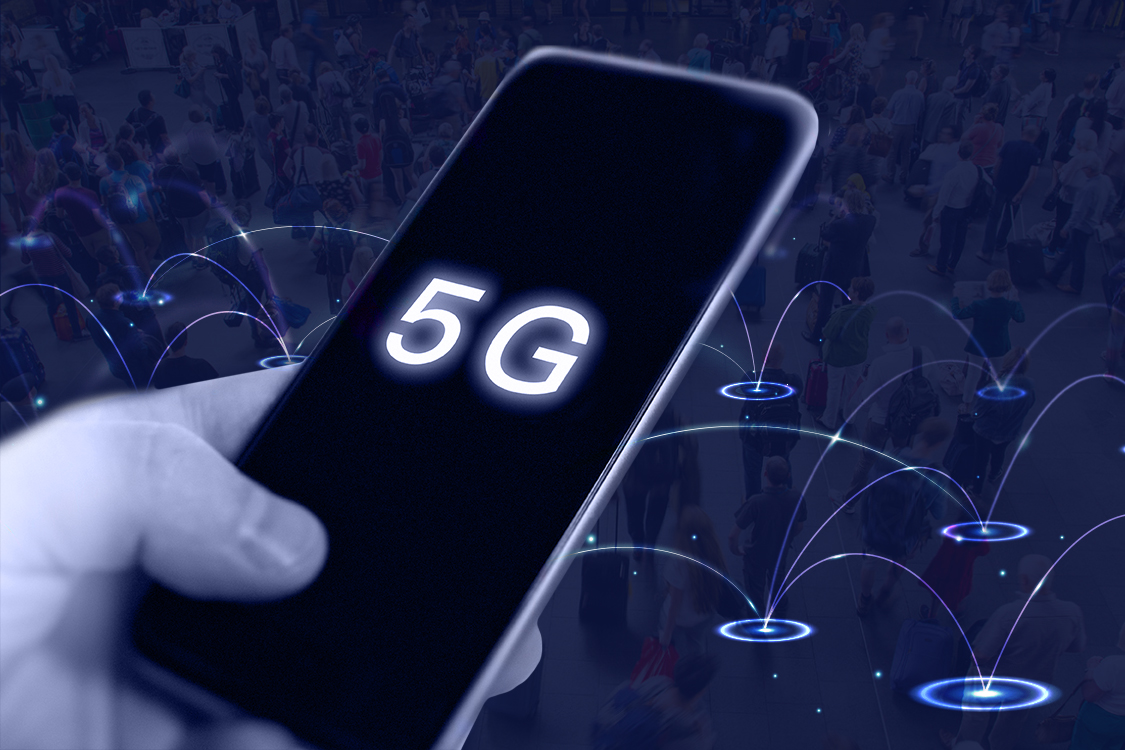Technology Trends

The term 5G refers to the fifth generation of mobile networks. As 5G devices continue to roll out there has been a lot of talk about their capabilities and potential. Far superior to 4G, the 5G network supports ultra-reliable low-latency communication (URLLC) and operates with Multiple Input, Multiple Output (MIMO) antennas.
Meanwhile, these antennas provide a precise orientation of the signal in one specific direction instead of a multidirectional broadcast. Currently, 5G can support more users than 4G, but some roadblocks prevent 5G from being standard across the world. Wireless companies must upgrade their antennas and phone makers must integrate advanced chips that support the high-speed 5G mmWave spectrum.
What is 5G Indoor Positioning?
5G positioning systems use wireless communications infrastructures. A 5G-enabled device communicates with nearby 5G access points, sending signals with precise timestamps. The amount of data transmitted is tiny and uses virtually no bandwidth. Each 5G receiver gets signals at a slightly different time, helping the system to determine the emitter’s location through advanced triangulation methods.


Pros and Cons of 5G Positioning and 5G Location Services
Positioning on 5G networks has improved over the years but still has its advantages and disadvantages. Here are some:
Pros
- Ultra-low latency: 5G dramatically reduces the time for network devices to respond to commands, bringing latency down to less than five milliseconds.
- Enhanced use cases: 5G looks promising in use cases such as tracking packages or goods, autonomous farming, smart factory solutions and campus geo-fencing.
- Greater user access: Data travels to more users through the deployment of 5G. Multi-user, Multiple Input, Multiple Output (MU-MIMO) and 5G allow more users to access data at the same frequency and time rates.
- High positioning accuracy: The super-fast 5G (mmWave) should be capable of achieving indoor 5G positioning accuracy within one metre or less, particularly in dense urban areas.
Cons
- Limited infrastructure for mmWave: The 5G we experience is called Sub-6GHz 5G, which is faster than 4G but insufficient for precise indoor positioning.
- High deployment costs: Building 5G cell towers is an expensive and labour-intensive process. For that reason, operators often limit nationwide rollouts.
- Lack of demand for extreme speeds: Most users don’t require the high speeds 5G offers, as streaming movies and videos at 4K requires only 25 Mbps, making 4G sufficient.
- Security concerns: Unless the 5G network is private, there have been concerns about the security and privacy of the public network. Larger user bases increase the attack surface, exposing enterprises to more cyber threats.
What Challenges Do 5G Location-Based Services Face for Indoor Positioning?
Although 5G seems promising for indoor positioning accuracy and asset tracking, several challenges persist:
- Focus on Sub-6GHz upgrades: Instead of building new 5G towers, operators focus on making Sub-6GHz speeds faster, which slows down the rollout of high-speed mmWave infrastructure.
- Physical limitations: 5G mmWave has short wavelengths that struggle to penetrate physical obstacles like walls, doors and trees. This creates a need for a denser deployment of towers for optimal performance.
- Expensive private networks: For 5G mmWave to enable precise indoor positioning, companies must deploy private 5G networks indoors. This involves purchasing and installing costly hardware in collaboration with telecom operators.
What is the Best Alternative to 5G Indoor positioning?
The most common technologies for indoor positioning today are Bluetooth Low Energy (BLE) Beacons and Ultra-Wideband (UWB).
- BLE Beacons: Widely used, BLE scanners detect these beacons within a specific radius. However, accurate indoor positioning requires substantial hardware deployment, increasing installation costs for larger venues.
- UWB Technology: UWB sends data over a wide frequency range, which lets it bypass obstacles like walls and improves positioning accuracy to levels of less than a centimetre. UWB is good for critical positioning tasks because it uses little power and is very accurate. But it’s still not widely used because most mobile devices don’t support UWB.
Is UWB a Suitable Choice?
UWB is a communication channel that spreads information over a wide portion of the frequency spectrum. This allows UWB positioning transmitters to transmit large amounts of data while consuming little transmit energy. UWB includes uses for positioning by utilizing the time difference of arrival (TDOA) or the RF signals to obtain the distance between the reference point and the target. The low frequency of UWB pulses enables the signal to effectively pass through obstacles such as walls and objects which improves the UWB positioning accuracy. In fact, UWB provides a high accuracy rate that can minimize error to sub-centimetres. Therefore, UWB positioning can be one of the most suitable choices for critical positioning applications that require highly accurate results.
UWB may seem like a great technology for indoor positioning, but it still hasn’t been adopted by enough companies to be a viable option. Most mobile devices are not equipped with UWB technology which makes it an unlikely choice for indoor positioning.
An innovative and far more advanced concept is an indoor positioning system that doesn’t rely on external hardware.
Mapsted’s Innovative Solution
A groundbreaking alternative is an indoor positioning system free from external hardware dependencies. Mapsted, a Canadian firm specializing in location-based services, has developed patented technology that provides indoor positioning accuracy of 1–5 metres without Wi-Fi, BLE or UWB. The economical choice in comparison to other technologies, Mapsted’s quick and efficient deployment times and enterprise functionality make it stand out from the competition.
The Future of 5G
In conclusion, 5G continues to revolutionize industries, enabling innovations like autonomous vehicles, augmented reality (AR), and predictive maintenance for smart factories. Although 5G indoor positioning has potential, it is not widely used because it relies on mmWave and is expensive to set up. Maybe the best way to move forward is to use hybrid solutions that combine 5G with technologies like BLE.
It is possible that 5G positioning systems may garner a place in the future when used with other technologies such as BLE. Undeniably, 5G will provide access to many more users at higher speeds. However, many people are wondering if 5G will be used on a conditional basis since the average user doesn’t require the insanely fast 5G mmWave. Also, it’s unlikely that we will see 5G being used for indoor positioning due to its inability to properly penetrate through physical barriers. The technology still requires improvement and will need to drastically reduce the price for it to be a viable option for most companies.
Ultimately, businesses looking for cost-effective, reliable indoor positioning should explore Mapsted’s innovative solutions, which deliver accurate results without the need for extensive hardware deployment. If you found this blog helpful and would like to learn more, we invite you to check out our blog on What Is Blue-Dot Navigation and How Can It Benefit Your Business? In addition, watch this short video on Introducing Hardware-Free Location-Based Solutions.
Frequently Asked Questions
Q1. Is it true that 5G doesn’t work indoors?
Ans. 5G mmWave has a very difficult time penetrating through walls, doors, trees, and even humans. Companies would need to install special 5G hardware in every room and on every floor, leading to extremely high project costs.
Q2. Can 5G achieve precise indoor localization?
Ans. With the proper deployment of 5G hardware, precise localization should be possible as long as physical obstructions are few.
Q3. How accurate are 5G networks for positioning?
Ans. 5G mmWave networks should be capable of positioning accuracy of one meter or below inside buildings and dense urban areas.
Q4. How can I boost my 5G signal indoors?
Ans. Special hardware known as smart cells must be deployed in every room and on every floor.
Q5. How fast is 5G indoors?
Ans. 5G dramatically reduces the time for network devices to respond to commands and reduces latency to less than 5 milliseconds.
